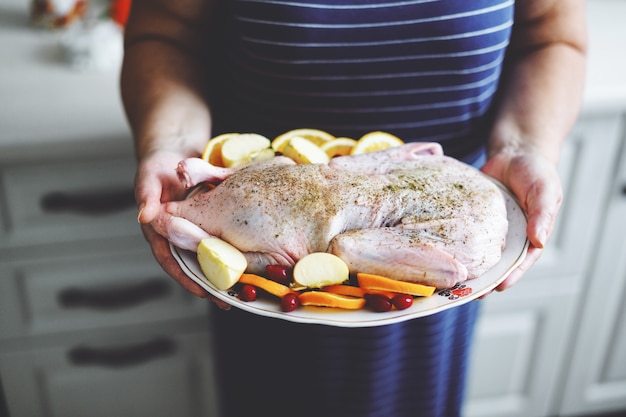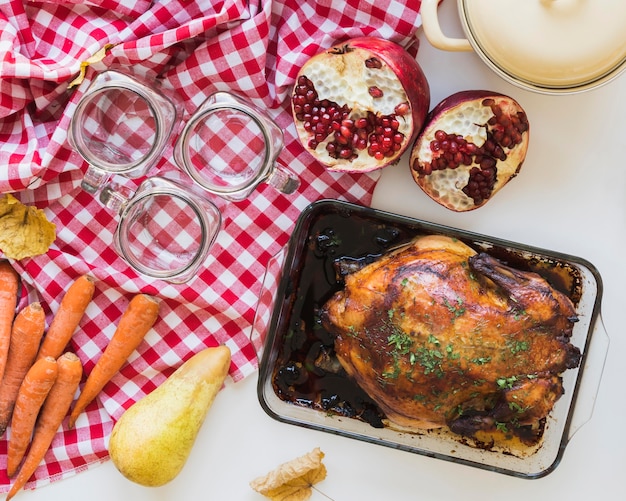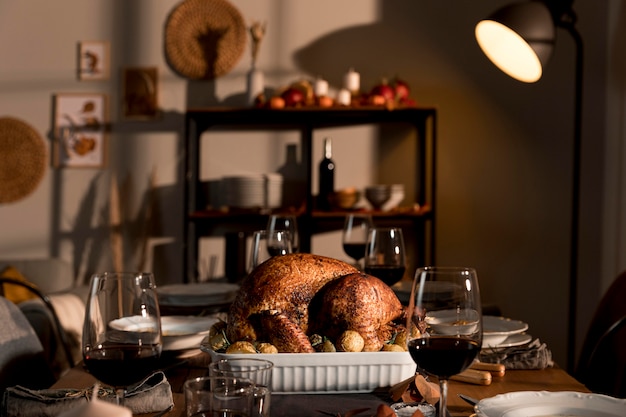The aroma of roasted turkey fills the air, a quintessential symbol of festive gatherings and heartwarming family meals. But when it comes to cooking a 12 lb turkey, a looming question lingers in the minds of many aspiring chefs: how long do I cook it for? It's a question I’ve grappled with myself for years, especially during the holiday season. I’ve experienced both triumph and disaster in the kitchen, and nothing sends a chill down my spine quite like the fear of a dry, overcooked bird. So, let's embark on a journey into the world of turkey cooking times, armed with a bit of know-how and a dash of experience. We’ll uncover the secrets to achieving a perfectly cooked turkey, leaving you confident and ready to tackle this culinary challenge with aplomb.
Part 1: The Basics

Before we delve into the specifics of a 12 lb turkey, let's lay down some fundamental principles. It's all about achieving that delicate balance between tender meat and a crispy, golden skin, and it takes longer than you might think! A general rule of thumb is to allow around 15 minutes per pound for a turkey weighing up to 12 lbs. For larger birds, you'll need to add a bit more time.
1.1. The Importance of Temperature
The most reliable way to ensure a perfectly cooked turkey is by using a meat thermometer. This handy tool allows you to gauge the internal temperature of the bird, ensuring it reaches the safe temperature of 165°F (74°C) in the thickest part of the thigh. It might feel like an eternity in the kitchen, but trust me, it’s worth the wait. This not only guarantees a juicy bird but also ensures food safety, protecting your loved ones from any potential risks.
1.2. The Role of Oven Temperature
The temperature of your oven plays a pivotal role in the cooking process. A higher temperature, like 325°F (160°C), will result in faster cooking times but can lead to a drier bird. A lower temperature, around 300°F (150°C), will give you a more succulent result, but it will take longer. Personally, I prefer the lower temperature for a more forgiving and flavorful bird. This allows the meat to cook more evenly, preventing any parts from drying out.
Part 2: Deconstructing the 12 lb Turkey

Now that we've established the basics, let's zero in on our 12 lb turkey. Based on our rule of thumb, we're looking at a cooking time of 180 minutes, or 3 hours. But, hold on, there's more to the story. Other factors can significantly affect the cooking time, especially when it comes to stuffing.
2.1. Stuffing and Cooking Time
Stuffing, a cherished tradition in many households, can add an extra layer of complexity to the cooking process. If you're stuffing the turkey, it will need to cook for longer to ensure the stuffing reaches a safe internal temperature of 165°F (74°C). I generally add an extra 30 minutes to the cooking time if I'm stuffing the turkey. This allows ample time for the stuffing to cook through and prevents any risk of undercooked food.
2.2. Boneless vs. Bone-in Turkey
The presence or absence of bones can also impact the cooking time. Boneless turkeys cook faster because there’s less mass to heat through. For a 12 lb boneless turkey, you can reduce the cooking time by 30 minutes, bringing it down to 2 hours and 30 minutes. However, keep in mind that a boneless turkey might be more prone to drying out. This is why it's essential to monitor the temperature closely and consider basting techniques to keep the meat moist.
Part 3: The Art of Resting

Now, here’s a crucial step that many overlook: resting the turkey. It might seem counterintuitive to let it sit after all that hard work, but it's essential for a truly delicious final product. After the turkey is cooked, allow it to rest for at least 30 minutes before carving. This allows the juices to redistribute throughout the meat, creating a succulent and tender feast.
3.1. The Science Behind Resting
During cooking, the muscle fibers contract, squeezing out juices. As the turkey rests, these fibers relax, allowing the juices to be reabsorbed, resulting in a more flavorful and moist bird. Imagine it as a little spa treatment for your turkey!
Part 4: The Crucial Role of Basting
Another technique that elevates the deliciousness of a roasted turkey is basting. Basting, essentially involves pouring the accumulated juices over the bird during cooking. This helps to keep the meat moist and adds a beautiful sheen to the skin.
4.1. The Power of Butter
One of my favorite basting techniques is using melted butter. It adds a rich, buttery flavor and helps to create a crispy skin. You can also use a mixture of butter, broth, and herbs for a more complex flavor profile. Remember to baste your turkey every 30 minutes during cooking for the best results.
4.2. Other Basting Options
Beyond butter, you can explore a variety of basting options. chicken broth or a combination of broth and wine can infuse the turkey with a savory depth. Adding a dash of herbs like rosemary, thyme, or sage can create a fragrant and aromatic experience. Experiment with different basting combinations to find your personal favorite.
Part 5: The Truth about turkey breast
Now, let's talk about the turkey breast. This is often the part that gets overcooked and dry. To prevent this, I recommend using a probe thermometer to monitor the breast’s temperature separately. You want the breast to reach 165°F (74°C) while the thighs are still cooking.
5.1. The Art of Covering
If you're concerned about the breast drying out, you can cover it with foil for part of the cooking time. This will help to retain moisture and prevent it from overcooking. However, make sure to remove the foil for the final 30 minutes of cooking to allow the skin to crisp up. The key is to strike a balance between moisture and browning.
Part 6: Taking the Temperature
As I mentioned earlier, using a meat thermometer is crucial for accurate results. Insert the thermometer into the thickest part of the thigh, avoiding any bones. When the internal temperature reaches 165°F (74°C), you're good to go! You can also use a separate thermometer to check the breast temperature, ensuring it reaches 165°F (74°C) as well.
6.1. Using a Thermometer
To use a thermometer effectively, make sure it's clean and sanitized. Insert the probe into the thickest part of the thigh, avoiding any bones. The thermometer should be inserted far enough to ensure the sensor is submerged in the meat. Leave it in place for a few seconds to get an accurate reading.
Part 7: The Importance of Resting
After you’ve cooked your turkey, it's essential to allow it to rest before carving. This gives the juices time to redistribute, resulting in a moist and flavorful bird. A general rule of thumb is to rest the turkey for at least 30 minutes before carving. You can cover it with foil to keep it warm while it rests.
7.1. Resting Tips
While the turkey rests, you can prepare the rest of your thanksgiving feast. Don’t rush the process. Enjoy this moment of anticipation and let the flavors meld.
Part 8: The Triumph of Timing
So, to summarise, a 12 lb turkey will take approximately 3 hours to cook. But, remember, this is just a guideline. Always check the internal temperature to ensure the turkey is cooked through.
8.1. Factors Affecting Cooking Time
Here’s a table that summarises some of the factors that can affect turkey cooking time:
| Factor | Effect on Cooking Time |
|---|---|
| Stuffed vs. Unstuffed | 30 minutes for stuffed turkeys |
| Bone-in vs. Boneless | -30 minutes for boneless turkeys |
| Oven Temperature | Higher temperature = faster cooking, lower temperature = slower cooking |
Part 9: Mastering the Art
Remember, turkey cooking is an art form, not an exact science. With practice and a bit of experimentation, you'll become a master chef in no time. I’ve learned so much over the years, from my own mishaps and the wisdom of seasoned cooks. And don’t be afraid to try new techniques and flavours.
9.1. Experiment with Flavors
Don’t be afraid to deviate from the traditional turkey recipe. Experiment with different marinades, rubs, and basting sauces. For example, a citrus marinade can add a bright and tangy flavor, while a herb-infused rub can create a savory and aromatic experience.
9.2. Presentation Matters
Once the turkey is cooked and rested, it's time to showcase your culinary masterpiece. A beautifully carved turkey is a feast for the eyes and the palate. Use a sharp knife to carve the breast and legs, ensuring smooth and clean cuts. Arrange the carved turkey on a platter with festive garnishes like cranberries, rosemary sprigs, or citrus slices.
Part 10: FAQs
10.1. What if my turkey is still pink?
It's a common misconception that pink meat means the turkey is undercooked. However, the color doesn't always indicate doneness. The best way to determine if your turkey is cooked through is by using a meat thermometer. As long as it reaches 165°F (74°C) in the thickest part of the thigh, it's safe to eat.
10.2. Can I freeze a cooked turkey?
While it's not ideal, you can freeze a cooked turkey for up to 2 months. However, it's important to wrap it tightly in plastic wrap and then in aluminum foil to prevent freezer burn. When thawing, do so in the refrigerator for 2-3 days or in a cold water bath for 3-4 hours.
10.3. How do I reheat a cooked turkey?
You can reheat a cooked turkey in the oven, microwave, or on the stovetop. If using the oven, preheat it to 325°F (160°C) and reheat the turkey until it reaches an internal temperature of 165°F (74°C). For microwave reheating, cover the turkey loosely with plastic wrap and heat on low power until it's warmed through.
10.4. Can I roast a turkey with the skin on or off?
roasting a turkey with the skin on results in a crispy, golden skin and helps to retain moisture. If you prefer a leaner bird, you can remove the skin before roasting. However, you'll need to watch it carefully to prevent it from drying out.
10.5. What are some good side dishes for turkey?
There are endless possibilities for side dishes to accompany your roasted turkey. Some classic options include mashed potatoes, stuffing, cranberry sauce, gravy, and green bean casserole. You can also get creative with seasonal vegetables like roasted root vegetables or a winter salad.
I hope this comprehensive guide has equipped you with the knowledge and confidence to tackle your next turkey feast. Remember, the key to a perfect turkey is patience, precision, and a dash of love. Enjoy the feast!
Everyone is watching

Corn on the Cob: The Ultimate Guide to Perfectly Cooked Ears
Healthy MealsAh, corn on the cob. Just the name evokes images of sunny days, barbecues, and that sweet, juicy flavour that ...

Scallops: The Ultimate Guide to Perfect Cooking
Healthy MealsAh, scallops. Those delicate, sweet, and utterly delicious morsels of the sea. They hold a special place in my...

Spaghetti Squash: The Ultimate Guide to Cooking and Serving
Healthy MealsRemember that time you saw spaghetti squash at the supermarket, looking all bumpy and strange, and thought, "W...

Salmon Cooking Times: Perfect Guide for Every Recipe
Healthy MealsLet me tell you, cooking salmon is an art form. It's all about getting that perfect balance: juicy and tender,...

Ham Cooking Time: How Long to Bake, Smoke, or Boil a Delicious Ham
Healthy MealsAh, ham. It's a classic, isn't it? A real crowd-pleaser, especially around holidays. And when done right, it'...
